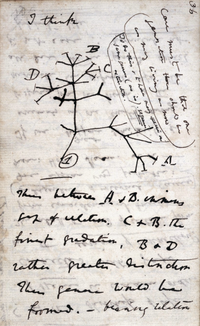
Photo from wikipedia
The Mexican tetra, Astyanax mexicanus, comes in two forms: a classical river-dwelling fish and a blind and depigmented cave-dwelling fish. The two morphotypes are used as models for evolutionary biology,… Click to show full abstract
The Mexican tetra, Astyanax mexicanus, comes in two forms: a classical river-dwelling fish and a blind and depigmented cave-dwelling fish. The two morphotypes are used as models for evolutionary biology, to decipher mechanisms of morphological and behavioural evolution in response to environmental change. Over the past 40 years, insights have been obtained from genetics, developmental biology, physiology and metabolism, neuroscience, genomics, population biology and ecology. Here, we promote the idea that A. mexicanus, as a model, has reached a stage where an integrated approach or a multi-disciplinary method of analysis, whereby a phenomenon is examined from several angles, is a powerful tool that can be applied to understand general evolutionary processes. Mexican cavefish have undergone considerable selective pressure and extreme morphological evolution, an obvious advantage to contribute to our understanding of evolution through comparative analyses and to pinpoint the specific traits that may have helped their ancestors to colonize caves.
Journal Title: Biology Letters
Year Published: 2018
Link to full text (if available)
Share on Social Media: Sign Up to like & get
recommendations!